Jump to Mobile
The brushes we ship with Sketchbook are great and you can do almost anything with them. However, you may want to add to the existing custom brush sets in the Brush Library by creating new brushes to suit your purposes. Many people find they use the default Erasers, Flood Fill, Solid Paint Brush, and Airbrush. Yet, many still tweak the Pencils and Pens to their style. You can customize your brushes and save them.
Creating your brushes in Sketchbook Pro for desktop
Create more brushes by copying a brush and changing its setting or creating a Do-It-Yourself brush.
- In the Brush Library, Tap on a brush set to select it
- Tap-hold
 and flick
and flick  to add a brush
to add a brush - Select a brush type to base your new brush on. By default, Current Brush is selected. Try starting with Standard.
- Tap Create. A
 Do-It-Yourself Brush icon will appear in your brush set.
Do-It-Yourself Brush icon will appear in your brush set.
Once you create a Do-It-Yourself brush, double-tap the icon to open Brush Properties and do the following:
-
Adjust the pressure sensitivity – In the Advanced tab, set brush radius and opacity according to the amount of pressure applied to the stylus. In the Basic tab, make changes to its Size to vary its brush thickness as the stylus pressure changes.
The brush size values are a rough approximation of pixel size, but can vary.
For example, if lines are too thin to be drawn on the screen, they default to being wider. To resize a marker, try adjusting its opacity and stamp spacing. To make a bigger marker, set the opacity lower and the brush stamp spacing lower.
-
Change the opacity – In the Advanced tab, set opacity to vary brush opacity as the stylus pressure changes. To have the brush randomly changed opacity as you lay down strokes, see Randomize.
See Brush Properties for help on customizing various aspects of a brush. For adding color randomization, see randomizing color.
Customizing brushes in Sketchbook for mobile devices
Customize brush settings in Brush Properties.
For many brushes, there will be two tabs. The first, Basic, contains basic settings, such as size and opacity. The second, Advanced, contains more complex settings, such as Tilt, Wetness, or Pressure. Tap a tab to access its properties. Scroll up or down in the window to access all available properties.
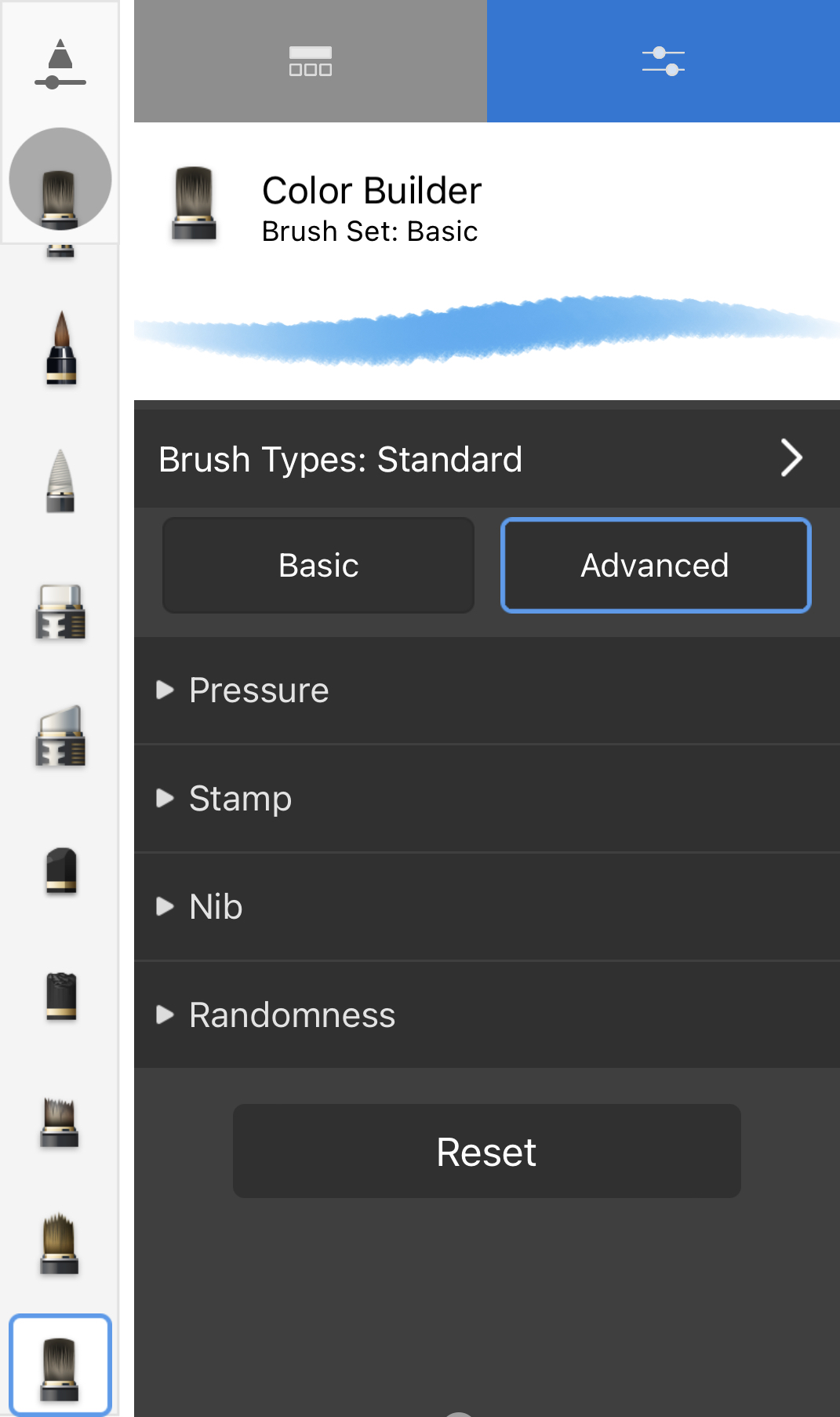
- Tap
 to open the Brush Library.
to open the Brush Library. - Select the brush you want to customize.
- Tap
 at the top of the window to access Brush Properties and edit the brush.
at the top of the window to access Brush Properties and edit the brush. - Open the different sections to access a variety of properties. Make the changes you need.
- To close the panel and return to the canvas, tap the canvas, or tap
 again.
again.
On handheld/phone devices
- Tap
 in the toolbar to open the Brush Library.
in the toolbar to open the Brush Library. - Select the brush you want to customize.
- Tap
 at the top of the window to access Brush Properties and edit the brush.
at the top of the window to access Brush Properties and edit the brush. - Open the different sections to access a variety of properties. Make the changes you need.
- To close the panel and return to the canvas, tap the canvas, or tap
 again.
again.
Setting a brush stamp and texture
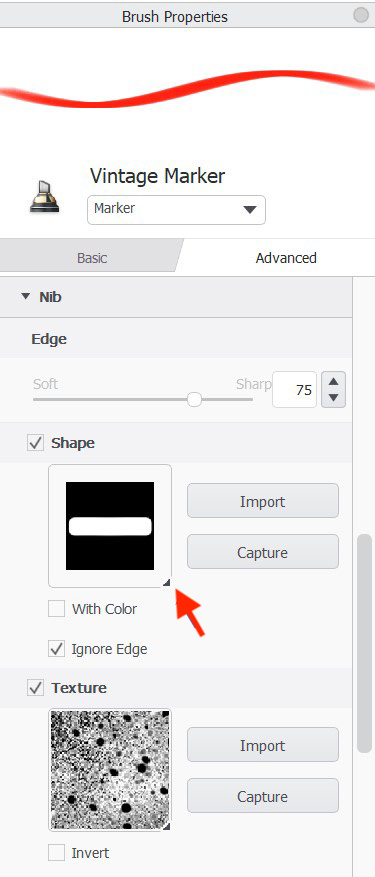
In the Advanced brush properties, you will see a section called Nib. This deals with the brush stamp – it’s Edge, Shape, and Texture. Let’s look at each of these.
Changing the edge of your brush
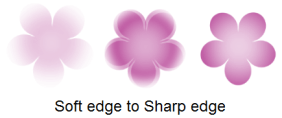
Use the Edge slider to make the edges of your brush softer or sharper.
- For a precision brush, you’d want to set Hardness to a very high value.
- For a pastel-type brush, you’d want to set Hardness to quite a small value.
Defining the shape of your brush
If you check out How to capture textures and shapes, it uses Shape to capture a chain link to create a chain brush. Shape has three options for defining the shape of your brush nib:
- Use
 to access a list of brush stamp shapes.
to access a list of brush stamp shapes.
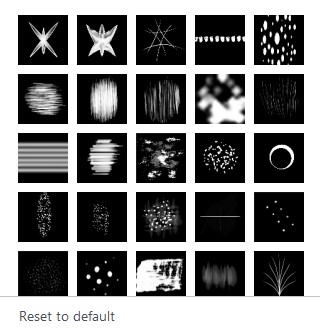
OR (only available in Sketchbook Pro on desktop)
- Choose Import to use an image on your machine.
- Choose Capture to take a screen capture of something on your screen.
Once you’ve made a selection, you can also opt to use the current colors of the image or capture, by adding a check to With Color. Leaving it unchecked means the brush will use whatever color you set in the Color Editor.
You can also decide to ignore the edges of the image or capture. By adding a check to Ignore Edge, your brush stamp shape will not be round.
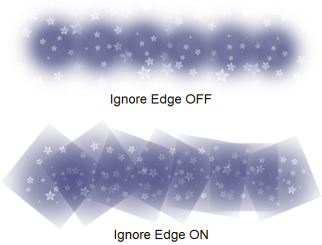
When would I use Ignore Edge
You might use Ignore Edge with the Ellipse tool and assortment of options in Brush Properties to create intricate designs. Start with Ignore Edge to help capture non-circular shapes. Then, use other options, such as Size, and in the Stamp section, Spacing, Rotation, and Rotate to Stroke, to adjust the orientation and size of the stamp.